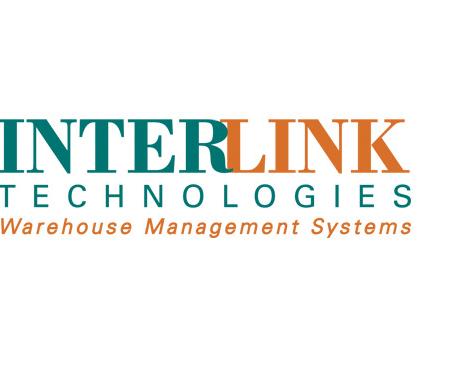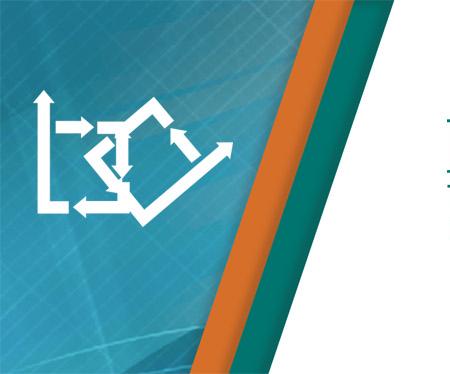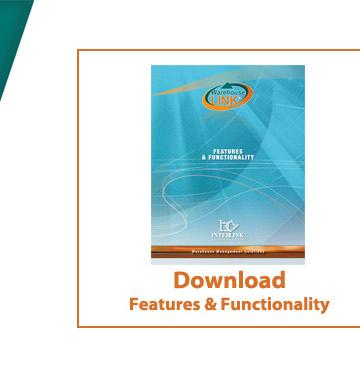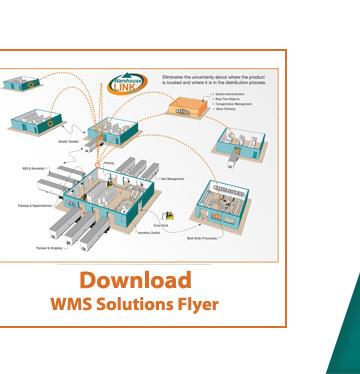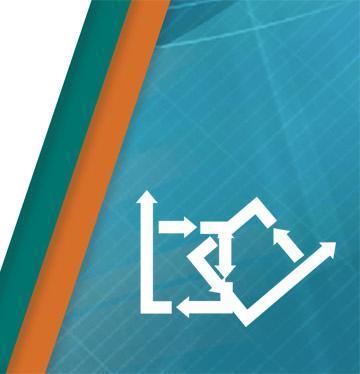Warehouse-LINK® leverages barcode and mobile computing technology. The error rate in recording data using barcodes is less than 1 in 3 million characters. Mobile computing technology allows the workers to direct, verify and record their actions at the site of activity.
Warehouse-LINK® uses 2 basic types of barcodes for warehouse tracking – a barcoded location label and a License Plate Number (LPN) label. Every location is has a barcode that identifies the location by building, zone, aisle, bay, level, and slot. Location labels are typically attached to racking, hung from the ceiling, or attached to the floor. The LPN label is unique, sequential and often a pre-printed label that is attached at receiving and is used to track a group of items in a container. A “container” for this purpose can be a pallet, carton, tote, etc. A single barcode scan reveals all necessary information about the product in the container. The LPN stays with the product throughout its lifecycle and be a standalone barcode or may include readable text with the barcode.
Scanning the LPN links the container to the barcode and scanning a location label identifies where the product in the container is located. Every move throughout the warehouse requires an LPN scan and location scan.
A Quick Look at Barcode History
- 1940s Grocery Companies desire faster way to get customers through checkout
- 1952 Bernard Silver and Joseph Woodland patent the first barcode symbology, the bull's-eye barcode that was patented as a "Classifying Apparatus and Method."
- 1950's David Collins of the Sylvania Corporation develops a barcode system for railroad cars called KarTrak to track train cars.
- 1960 Theodore Maiman invented the first working laser (Light Amplification by Stimulated Emission of Radiation)
- 1970 Monarch Marking is the first company to produce barcode equipment
- 1972 Kroger Kenwood Plaza in Cincinnati uses "bull's-eye" barcodes with RCA's automated checkout stand with success
- 1973 Alan Haberman with other supermarket executives approached several companies and asked for a scannable symbol that grocery stores could use for faster and more reliable customer checkout
- IBM won the grocery store contract and George Laurer was assigned the task
- 1974 the first UPC code was scanned on a pack of Wrigley's Juicy Fruit Gum at Marsh Supermarket in Troy, Ohio, using RCA scanner
- 1974 Dr. David Allais and Ray Stevens of Intermec developed Code 39
- 1980's barcodes are widely used in grocery and retail businesses
- 1981 US Dept. of Defense Code 39 became the standard for all products sold to military
- 1986 Interlink Technologies introduces warehouse management system to Stihl Chainsaw
"A barcode is an optical, machine-readable, representation of data; the data usually describes something about the object that carries the barcode," as defined by Wikipedia. The barcode uses a series of numbers, bars, and spaces that when scanned reflects the pattern back to a computer to be interpreted.
There are many different types of barcodes, for varying purposes, which adhere to standards set by GS1 (Global Standards One). For more information on the barcode implementation process, go to http://www.gs1.org/10-steps-to-barcode-your-product. Examples of barcodes include the UPC, which is probably the most commonly known barcode to consumers and is used to identify the company and the product. Code 39 (3 of 9) is one of the most widely used barcodes in warehousing because it scans easily, is alphanumeric, and the size is easy to use in the warehouse. Interleaved 2 of 5 is used in the distribution industry but is only numeric. Code 128 is alphanumeric or numeric and is used mostly in the retail industry. FedEx uses Codabar; UPS uses MaxiCode and USPS uses the Intelligent Mail barcode. These examples are just a small sampling of barcode types.
The introduction of barcodes, mobile computers and Warehouse Management Systems (WMS) revolutionized the warehouse industry in the 1980s. Warehouse Management Systems, such as Warehouse-LINK®, process any barcode. Barcodes hold the key to gathering the information in a small, compact label. When the barcode is scanned, detailed information is revealed about the product – where the product is in the supply chain process, where it came from, when it was received, who received it, where they put it, when it was picked, who picked it, what was shipped, and a whole host of other real-time information. Barcodes and WMS provide an overall snapshot of what's happening in the warehouse as well as small details about the product like weight, dimensions, batch/lot/serial numbers, and dates associated with the product.
The job of a WMS is translating and relating the barcodes together. When the product is received into warehouse inventory, the barcode (SSCC-18, Code 39, etc.) is translated into a license plate number (LPN). The LPN is used to track that group of items in the container. The container can be anything that holds the product such as a pallet or carton. A single barcode scan reveals all necessary information about the product in the container. Code 39 is a versatile barcode that may be used as a location label in the warehouse, tracking the location the unit was putaway. Sounds straightforward and simple, but in a warehouse with thousands of items and hundreds of locations, barcodes are vital in accessing product information, knowing accurate inventory counts and knowing where to find the product quickly.
References:
- http://99percentinvisible.org/episode/barcode
- http://www.smithsonianmag.com/innovation/history-bar-code-180956704/?no-ist
- https://en.wikipedia.org/wiki/Barcode
- http://www.scandit.com
- http://www.gs1.org/10-steps-to-barcode-your-product
- http://www.gs1.org/barcodes
- http://www.barcode.ro/tutorials/barcodes/history.html
- https://en.wikipedia.org/wiki/Code_39
- https://postalpro.usps.com/
- http://www.adams1.com/spec.html
Warehouse-LINK® provides visibility to inventory throughout the entire warehouse and beyond the four walls. It can be frustrating to managers when they have to rely on an employee’s memory to locate the product. What happens when that employee is gone? It can be a huge time sink and unnecessary expense having workers find product – only to realize it does not exist, is “lost” or product quantity is short. Warehouse-LINK® eliminates inventory that “slips through the cracks” with integrated worker accountability, product and location verification, and automatic cycle counts that ensure dependable accuracy.
Visibility includes not only product visibility, but also visibility to workers and the tasks they are performing as well as visibility to functions as they are occurring in real-time. This amount of visibility allows a manager to move labor around as needed for the most efficient use of time and labor. For example, when a truck arrives at the dock early (or late), the manager has visibility to see when the truck is available for receiving or shipping and can pull labor from other tasks that may not be as critical as getting the truck unloaded or loaded.
Visibility with Warehouse-LINK® allows managers the flexibility to use every square foot of the warehouse by mixing locations, setting up temporary locations and tolerating exceptions to the rules.
Real-Time Inventory
The entire warehouse operation realizes the benefits of real-time inventory information. Warehouse-LINK® allows managers to see the big picture in the warehouse. Knowing where the product is located, quantity on hand and the status of receiving and shipping leads to increased productivity, decreased fulfillment times and better decision making. Knowing the status of receiving or shipping and knowing where the labor is distributed helps managers balance needs and take advantage of high and low activity in the warehouse.
The warehouse industry understands that getting the product in the door and out the door quickly gives a competitive advantage. Managers will be amazed at all the information they have at their fingertips and how much easier it is to manage with accurate, real-time information.
